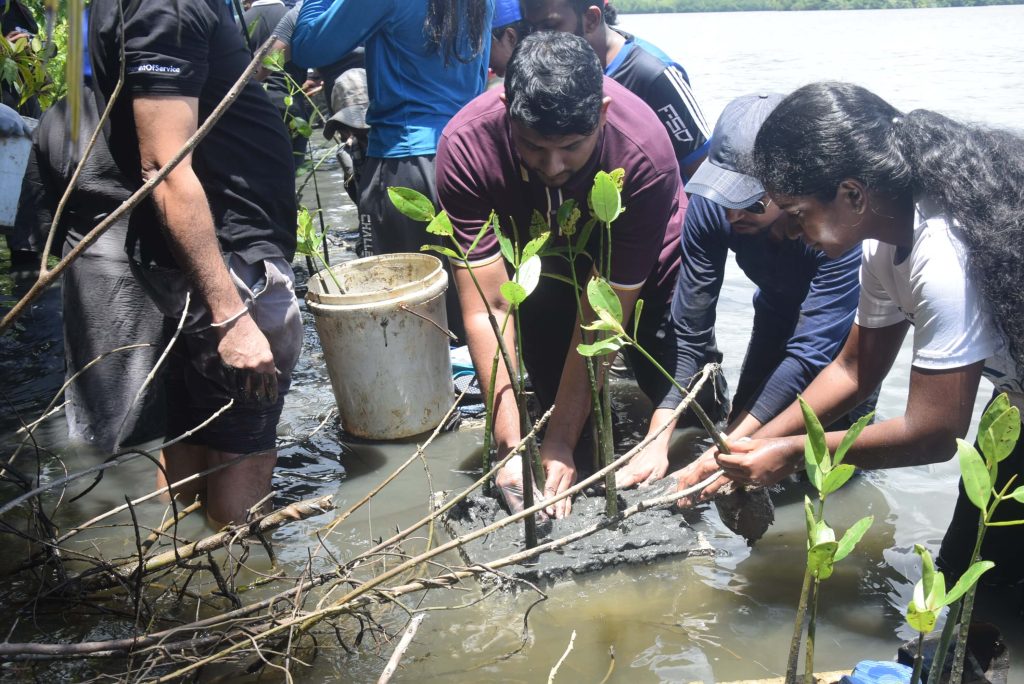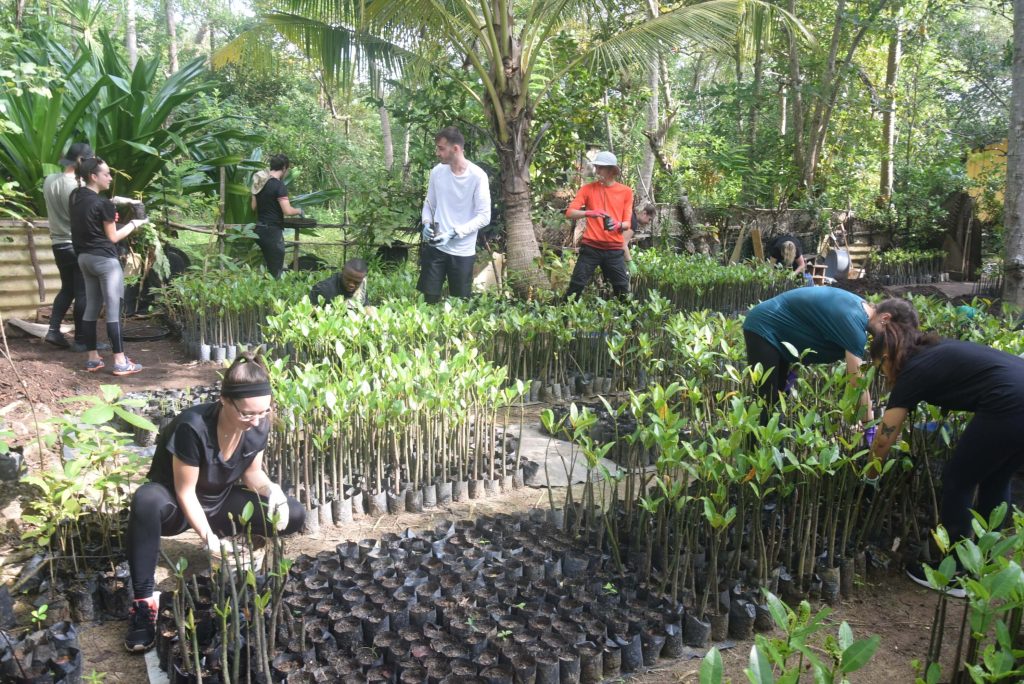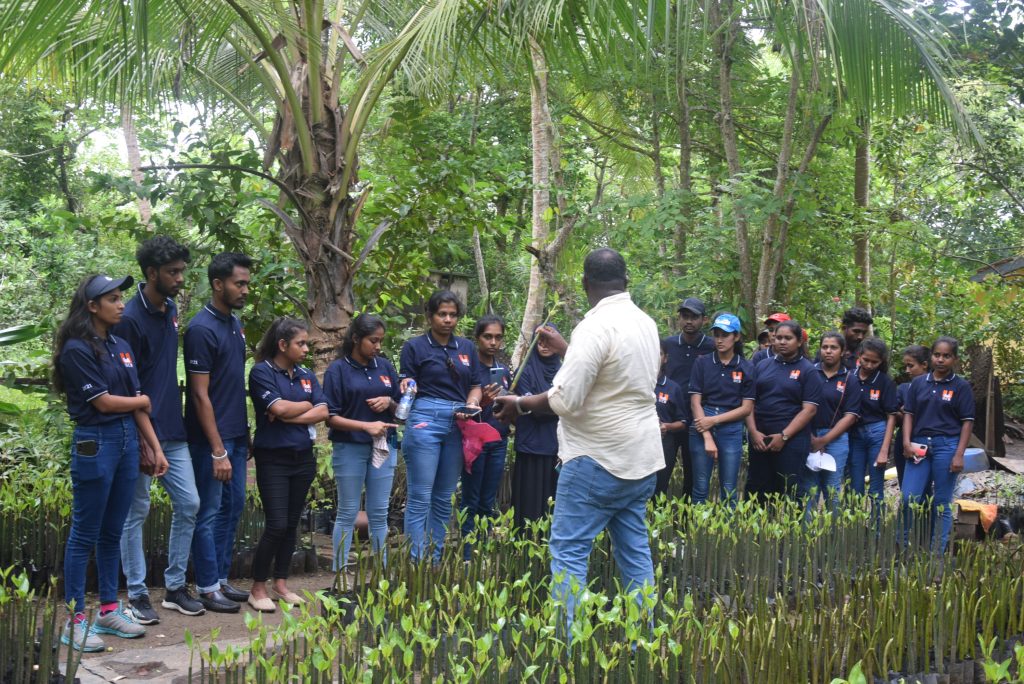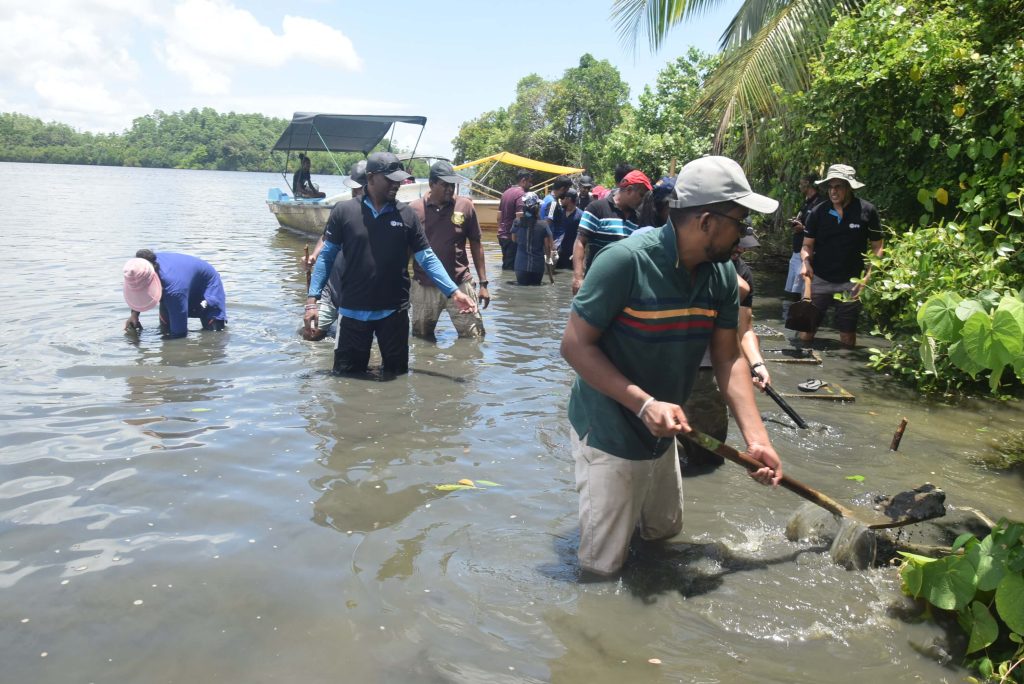10 YEARS Foundation
Preserving Mangroves together
Ensuring Ecosystem Balance: WORC and DERTOUR Foundation’s Mangrove Conservation
As the DERTOUR Foundation reaches the remarkable milestone of a decade of impactful collaborations, we are thrilled to shine a spotlight on our valued partners. Today, we would like to introduce you to the Wildlife and Ocean Resource Conservation (WORC), an organization that has been at the forefront of ecosystem conservation in Sri Lanka.

Mangrove Conservation
Mangroves play a crucial role in coastal ecosystems, offering protection against erosion, filtering pollutants, and serving as carbon sinks. WORC’s innovative approach involves planting mangrove trees strategically to create natural barriers, fostering growth and mitigating the impact of motorized boats that often threaten these delicate ecosystems. With the help of ecotourism, including boat tours and educational programs, WORC has planted 15,000 mangrove trees, offsetting 6,000 tonnes of CO₂ and creating sustainable livelihoods for the local community.


In 2017, the innovative approach of planting mangrove trees in mud-filled bottomless barrels along the shore commenced. Three years post-planting, the barrels form a natural shore barrier. The project engages the community actively, with pupils from five schools in the Koggala lagoon participating in educational programs. WORC’s ecotourism efforts extend to upgraded boat tours equipped with new life jackets and lifeguard-trained guides.
The collaboration with the DERTOUR Foundation has been instrumental in the project's success. The partnership extends beyond environmental preservation, actively involving the community and promoting eco-tourism. The initiative has not only enhanced the mangrove ecosystem but also opened up new avenues of income for the region.
Insights and Impact: A conversation with Dhanshuka
In a candid interview with Mahanama Gamage Greshan Dhanushka, environmentalist and WORC Chairman, emotions flowed freely. “We started with 10 Catamaran boats to transport tourists and now have 30,” Dhanushka shared. “This eco-friendly transportation mode is extremely beneficial not only to the lagoon bio-environment (as it doesn’t have a mechanical engine) but also to mangrove conservation activities in Koggala Lagoon. We have been promoting catamaran boat rides in order to control the environmental damage caused by tourist boats with engines,” he explained.
Beyond the numbers, he spoke passionately about the transformative impact on the community. “We had a lot of pushback, but now we see the benefits—the mangroves have grown, the fish have returned,” he added, his voice resonating with the tangible results witnessed within just two years. Dhanushka is very familiar with the mangroves – he often went fishing there with his grandfather when he was a child and learned about the importance of the mangroves for the fauna and the coast.

Dhanushka emphasized the educational aspect, stating, “From 2022, 12 million rupees came back to the community.” This financial influx resulted from partnerships, such as with Go Vacation, which sent 50 vacation groups, contributing to the community’s well-being. The initial skepticism faced by WORC has transformed into pride, with the community not just benefiting economically but finding joy and purpose in the conservation efforts.
Beyond Conservation: A Ripple Effect
As the conversation delved deeper, Dhanushka shared instances of the community being able to engage with the government on important issues, showcasing how projects had rippled beyond ecological restoration, influencing broader governance and community relationships. One such example is the altering of the natural estuary of the Koggala lagoon after the government placed a stone fence there. “The estuary of Koggala lagoon was changed by the government long before we started mangrove conservation projects,” Dhanushka explained. “The purpose of the process was to control the flow of sea salt water into the upper reaches of the lagoon. Because this was done without proper environmental study, there were many environmental problems in the lagoon, which led to the obstruction of the natural opening and closing of the lagoon’s estuary.
One of the problems that emerged was the destruction of mangroves due to reduction in salt concentration in the lagoon – once the salinity concentration in lagoon water decreased, invasive plants and animals started to spread like wildfire. Furthermore, as the water level in the lagoon rose, the banks eroded, and the mangroves washed away, which also led to the disruption of people’s lives as the low-lying areas were inundated with water.”
This problem was solved with the support of the community, and the lagoon estuary is now in its natural state. This goes to show that most problems can be solved by working together not only with government agencies, but also with local communities.
Tourists are also starting to be very interested in protecting the mangroves, which is why they are now offered the chance to plant mangroves and play an active role in the island’s conservation efforts. The ripple effect has extended to other islands, with communities recognizing the value of involving tourists in conservation efforts.

Dhanushka’s reflections painted a vivid picture of the project’s success, extending beyond environmental conservation. “We found interesting species of fish for the first time on our island. The conservation value for the area has increased, so we have a lot of researchers coming in and studying,” he shared. “We plan for restoration, sustainability, and economic benefits,” Dhanushka emphasized. The vision encompasses not only healing the environment but also fostering sustainable livelihoods for the community.
Community Voices
The interview extended to include perspectives from other community members, who echoed the positive impact of the project. “As a widow with two kids, financial problems weighed heavily on me. This project has been a lifeline,” shared one community member during the interview. Dhanushka emphasized the profound impact, stating, “We’re not just restoring mangroves; we’re restoring lives and livelihoods.” Another person emphasized the unity and joy experienced while working as a community. The project has not only brought economic benefits but also a sense of pride and happiness among the participants, seeing tangible results and receiving appreciation for their work.

Another interviewee highlighted the emotional aspect of their work. “When we work, we see the plants growing in the nursery and we are immensely proud of the success of this project.” They are even happier when people appreciate their job,” Dhanushka added. The pride and joy in contributing to a successful project have become a source of motivation for the community.
Future Plans and Global Recognition
Looking ahead, WORC envisions expanding its successful model to restore larger areas and empower more communities. “Biodiversity has also increased—crabs, fish, prawns, plants,” Dhanushka mentioned, emphasizing that the project’s positive effects are not limited to a single species but extend to the entire ecosystem.
“The results speak for themselves; this is one of the greatest mangrove restoration projects in the world,” Dhanushka stated with pride. Other countries are not just taking note; they are extending invitations for WORC to share its knowledge and best practices. The project’s success sets it as a model, guiding others toward effective and impactful conservation.
